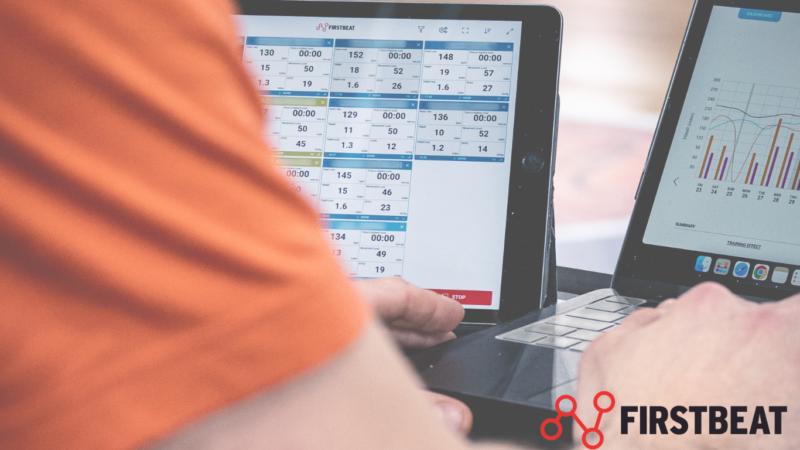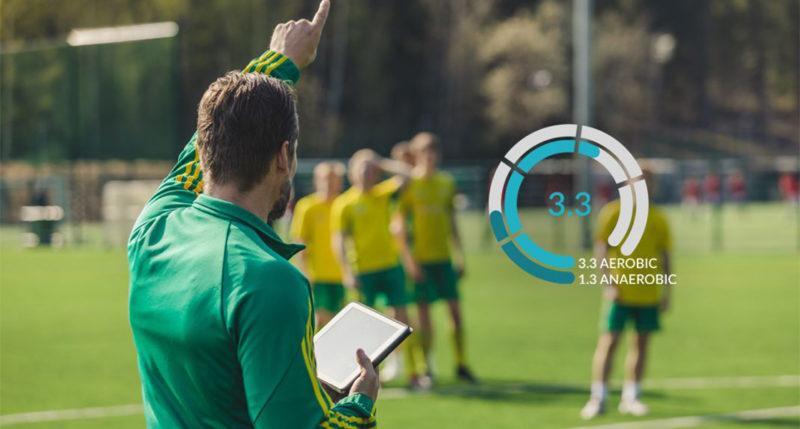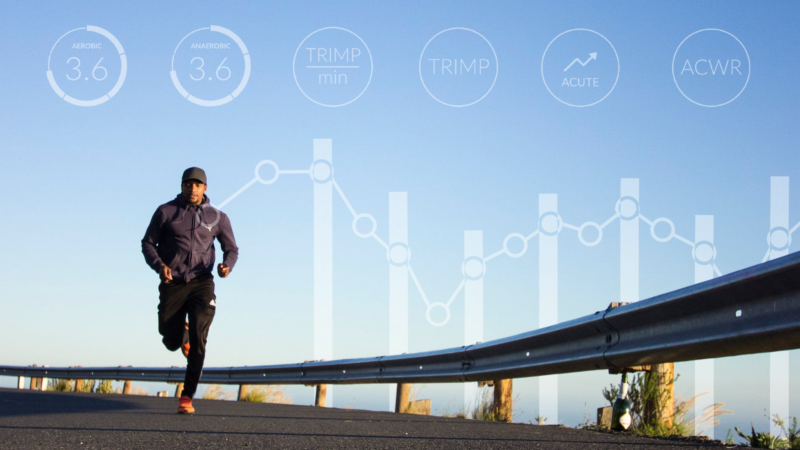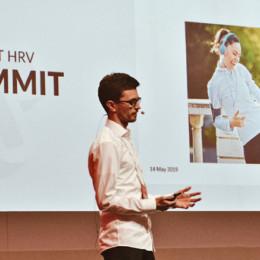
The Return-to-Play process, or indeed any conditioning program that is not in the form of the athlete’s sport, can be a challenge to manage.
Questions such as how much should my athlete do, what activities should we do, and how this compares to the demands of their sport can be difficult to answer. One example I use often is that of high-speed running in soccer.
Covering 400m at high speed in the context of a game (or ‘normal’ training session) is very different from doing so during a set of straight-line running drills. So how can you tract the activities in a way that makes them comparable?
The Firstbeat Sports Training Effect metric makes it possible to compare all of your activities as it is focused on the internal response, the metabolic pathways that are being utilized, and the overall effect on the development of those pathways. I will first give a brief explanation of how they are calculated before sharing more practical examples.
Aerobic Training Effect
Aerobic Training Effect describes the impact of a session in terms of VO2max and endurance capabilities and is primarily based upon the peak EPOC recorded within a session. For full information read our White Paper.
Anaerobic Training Effect
Anaerobic Training Effect quantifies the impact of repeated sprints and the highest-intensity activities. This metric is extremely important for intermittent sports like soccer or ice hockey where the demands are very stop-start and cannot be quantified using heart rate alone.
It considers numerous factors when identifying anaerobic work intervals, including rate of increase in heart rate, opportunities for ATP resynthesis, accumulated fatigue, session intensity, and work: rest ratios. For full information read our White Paper.
Mirroring Training Demands
In the case of a lower limb injury for a field sport athlete, they will clearly be inhibited from their normal running-based activities, particularly during the early stages of rehabilitation.
However, there will be other activities that they can do, such as an arm bike. This is of course utilizing totally different muscle groups, but if you know the metabolic demands of a typical field-based session you can still mimic those to minimize the loss of base conditioning.

Figure 1. An average training week in soccer.
When looking at the typical game week structure in soccer we saw an average model as shown in figure 1. Imagine that this average weekly periodization belongs to our hypothetical injured player, you could then look to replicate this from the off-feet sessions they are doing immediately post-injury.
Even within the first two weeks of reduced activity, we started to see negative adaption, such as decreased blood volume which in turn leads to a reduction in VO2max within normal training. So by matching normal training demands, we can minimize any such losses, or even use this time as an opportunity to develop VO2max by increasing cardiovascular demands during a time when normal musculoskeletal demands are potentially reduced.
Training Progression / Periodization
In addition to mirroring the demands of isolated sessions, you can use Training Effect to periodize and progress your Return-to-Play program. This may be particularly pertinent to long-term injuries which have meant your athlete has spent a lot of time away from the field.
Even if energy demands have been mirrored it may still require things to be taken back to the beginning because of the increased mechanical demands when going from off-feet training (cycling, swimming, etc.) to running or field-based sessions.
You can use Training Effect to gradually build up the difficulty of your sessions, first introducing the Aerobic elements and then introducing Anaerobic until these once again mirror the demands of full training.
This helps to ensure you don’t do too much too soon, whilst also providing a clear progressive plan that can be easily communicated with your athlete(s). When used in combination with the Quick Recovery Test you can closely monitor how your athlete is coping with these gradually increasing demands.

Figure 2. A progressive training plan, showing gradual increases in Aerobic and Anaerobic Training Effect.
Another benefit of both of these strategies is that it makes it very easy to communicate and explain the plan with your athlete, giving them a clear way to see their progress on their journey back to full fitness. Feedback from customers tells us that Training Effect is a great way of explaining session demands with your athletes because it is easy to understand. All of this helps keep them engaged and bought into what can be a very mentally stressful and difficult time in their career.
Learn more about how Firstbeat is used for return to play by watching our webinar recording with Nick Grantham, Premier League Lead Strength and Conditioning Coach here.
You might also be interested in

How to Maximize Use of Firstbeat During Return to Competition
In this article, I’ll outline my strategy for RTC processes and elaborate on how I use Firstbeat to improve decision-making during this phase. I categorize RTC into “off-court” and “on-court” rehab

How to Use Training Effect: The Firstbeat Sports Feature that Measures the Impact of Training
In this article, we look at how Training Effect is calculated, the Training Effect scale, and how it is visualized in Firstbeat Sports.

Firstbeat Heart Rate Sensors with Straps vs Heart Rate Sensors with Vests – What’s the Difference?
Heart rate data forms the basis of multiple performance metrics used in professional sports. These metrics support decision-making and facilitate effective athlete and team performance management. Key metrics that rely…


